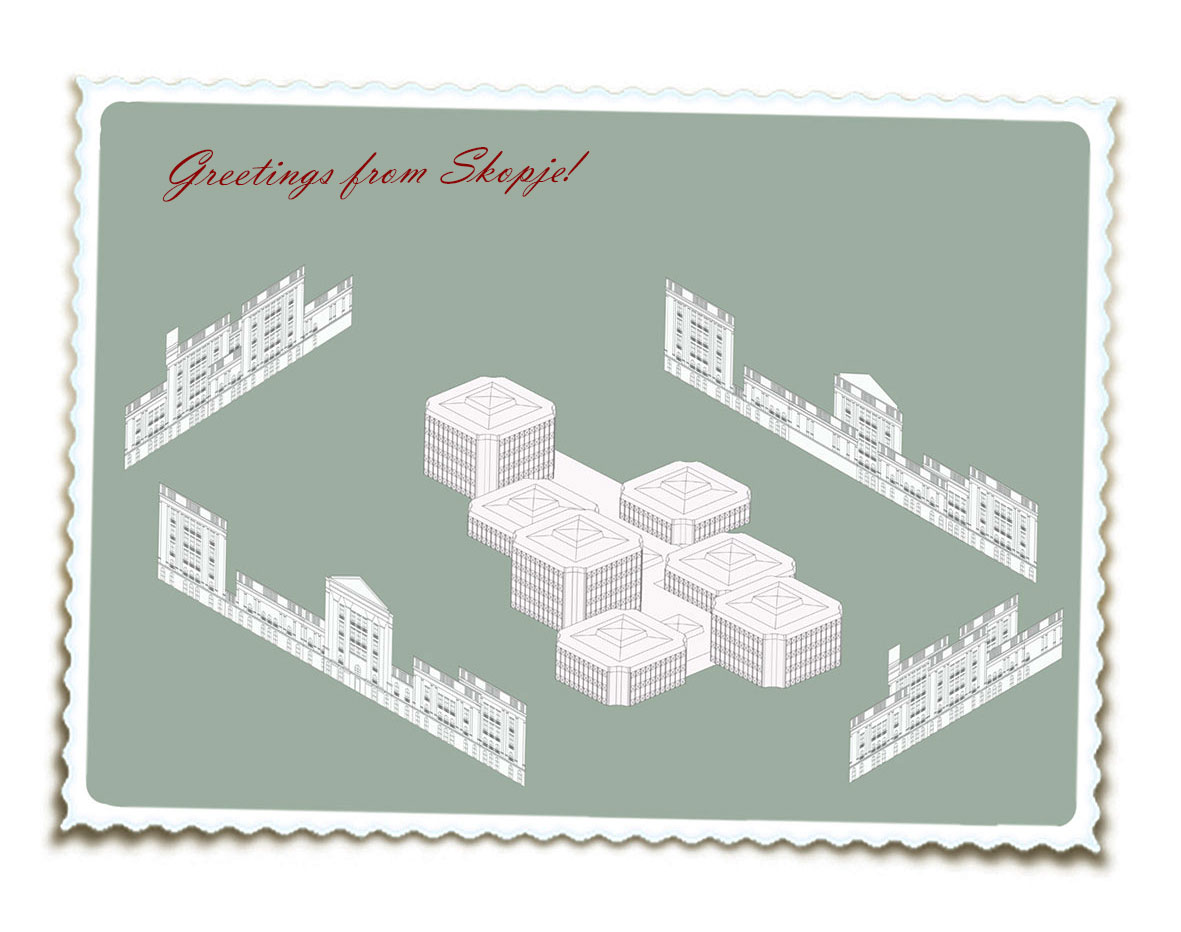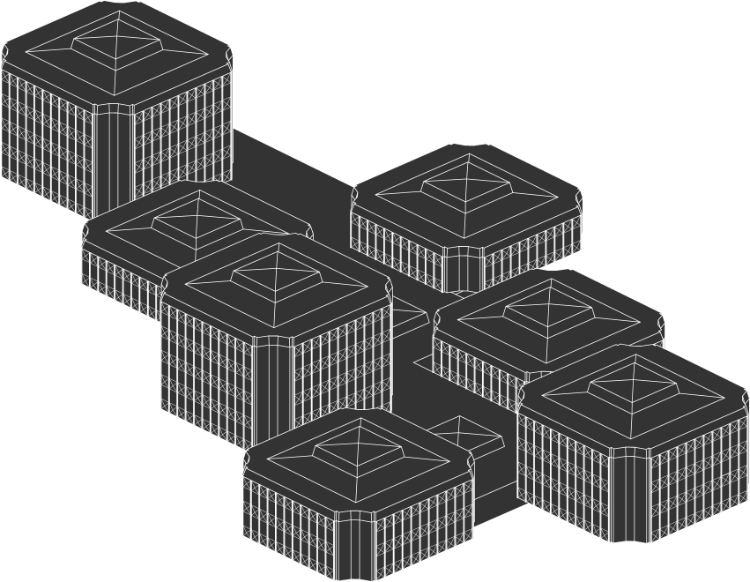Former Central Committee of the Communist Party of Macedonia
Petar Mulichkovski
1970
Facade Reconstruction
Zharko Chausheski and Filip Bogatinov
2014
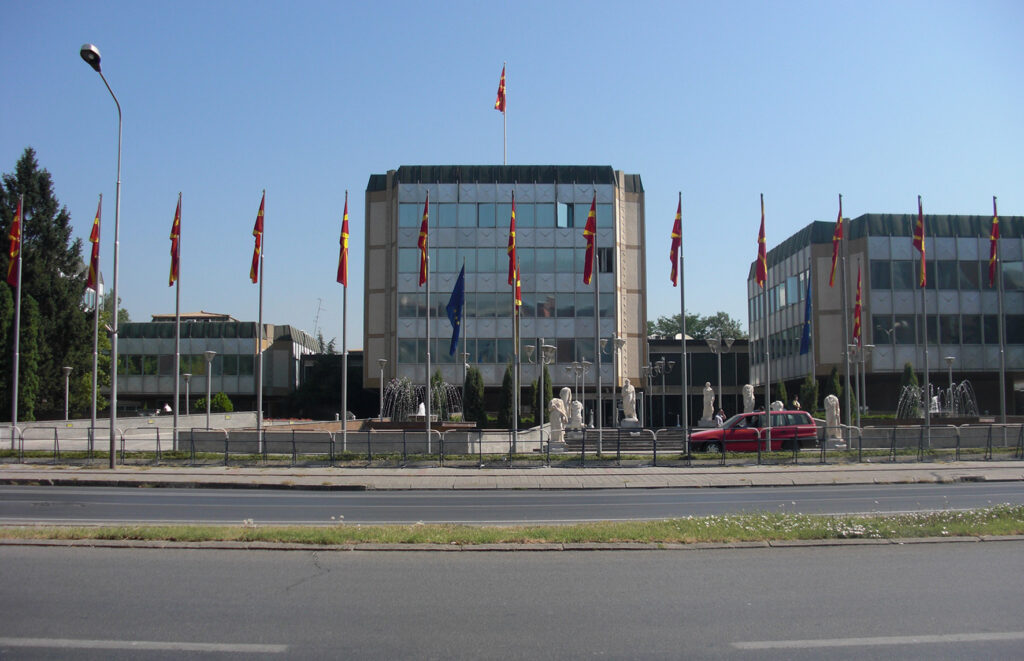
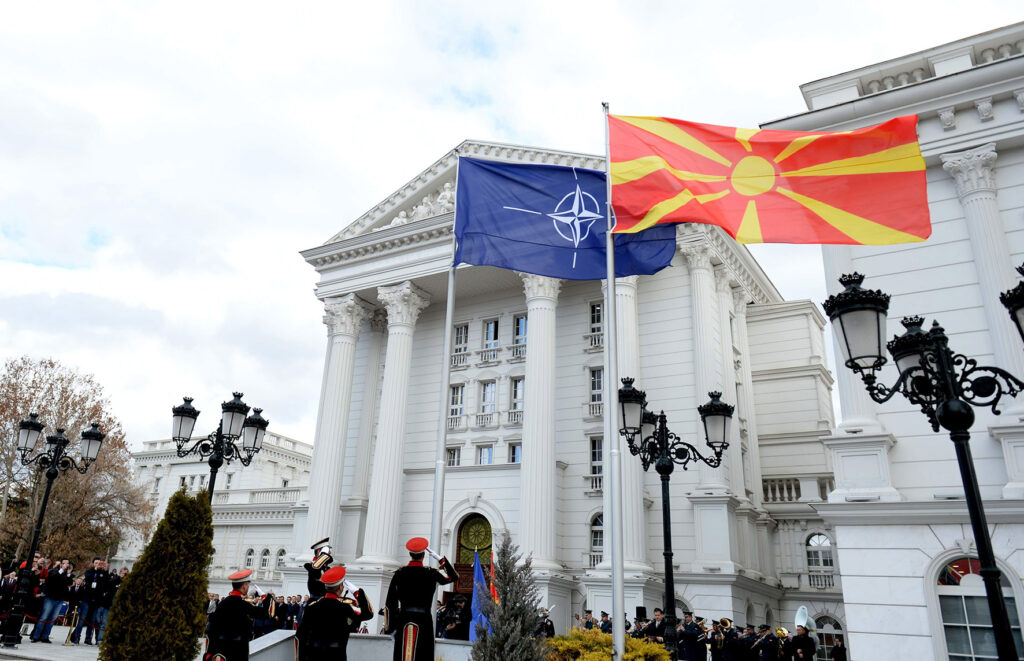
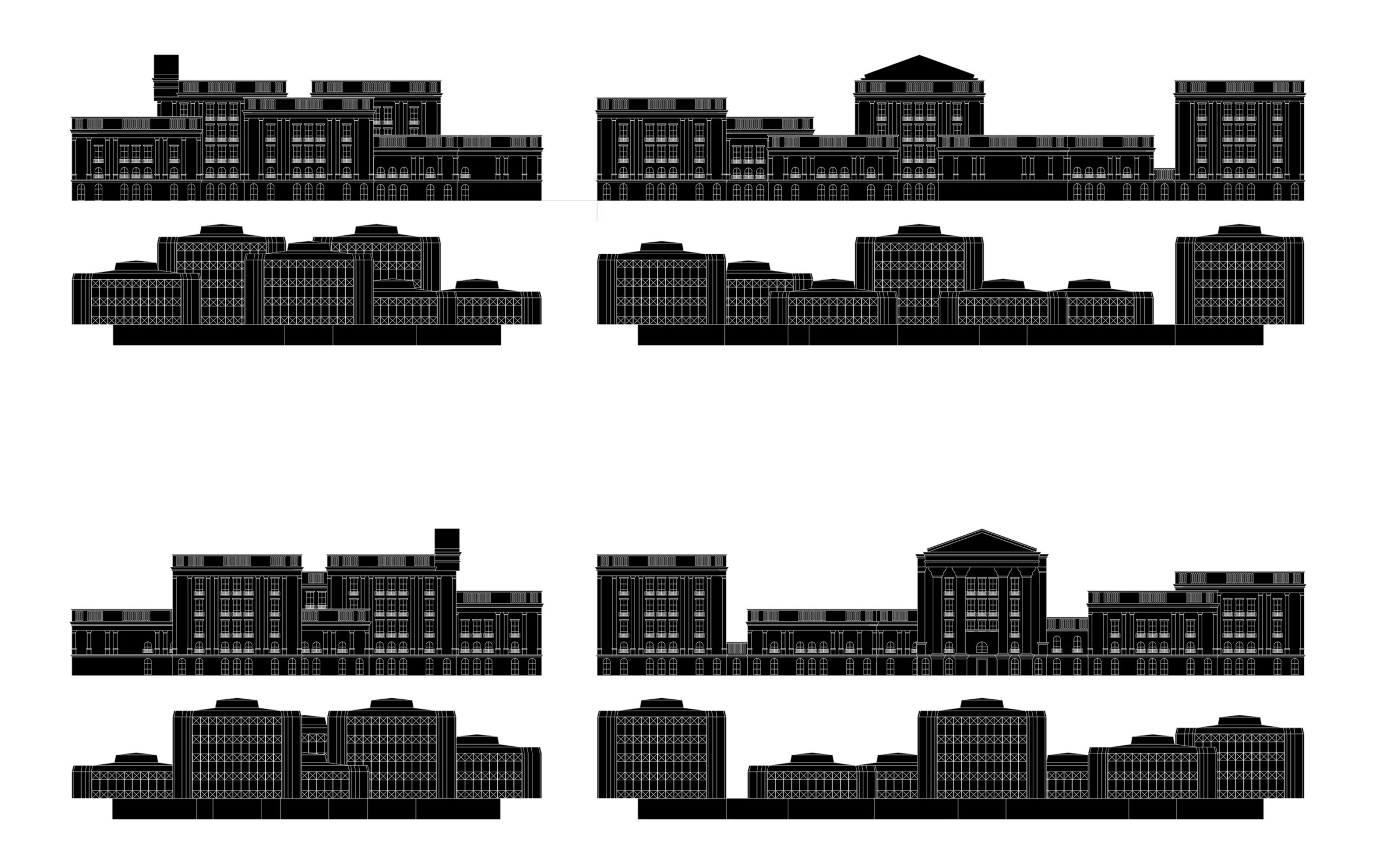
The building of the Macedonian Government was built in 1970 by architect Petar Mulichkovski. It was originally built as the Central Committee of the Communist Party of Macedonia, which makes it an important part of the country’s ideological history.
It is one more example of the post-earthquake buildings that represent the third modernization period. This complex spatial structure attempts to establish distance from the orthodox principles of the functionalism and explore new typological solutions. In its architectural essence is the principle of fragmentation of the volume in individualized units.
The building’s composition has seven individual segments (six in its original state, the seventh one added later on). All of the segments have the same footprint, but variate in height and are connected with a uniting base. Structure-wise, this building was a novelty. All of its segments are ‘floating’ volumes with a reinforced concrete core, and all of them are treated equally in their facades. The building’s facade also stands for the experimentation with technological achievements.
In 2014, within the Skopje2014 project, the Government building was stripped from its original facade and wrapped in a new one, with an architectural language that does not correspond its structure or planning. The facade reconstruction is done by Zharko Chausheski and Filip Bogatinov. This is another example which shows that Skopje2014 is dealing only with exteriors and points out the project’s ideological goal. Skopje2014 is only dealing with the image the building is constructing and not with the actual building itself.
The great resemblance the new facade has with the White House by James Hoban, built in 1800 in Washington, makes the newly renovated building of the Macedonian Government another example of mimicking someone else’s historical values whilst denying its own.
To conclude, the Government building is an urban artefact of Skopje’s modernization history and a unique example of architecture in the city. Today this urban artefact has been ‘redressed’ in an exterior layer borrowed from a foreign historical context. This has been done by the Skopje2014 project with an intention of masking the ideological history the building represents.
